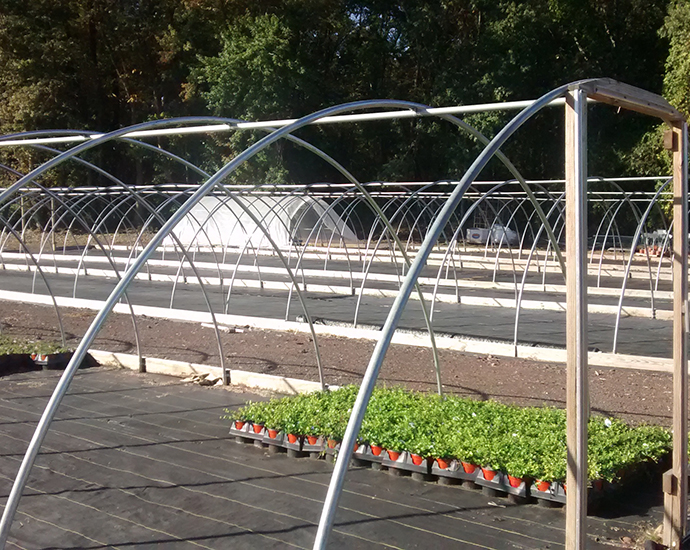
As a pillar-like existence in the greenhouse, the square tube can be said to be indispensable. Compared with round tubes and oval tubes, square tubes are easier to cut and weld, and can easily handle most hoop accessories.
In actual use, the common dimensions of galvanized steel pipe for greenhouse are as follows:
30*50/40*60/50*70/80*80/100*100/120*120 (units are MM)
Square tubes are often used as main columns in greenhouse construction, large greenhouse cross braces and diagonal braces, and door welding. Usually the thickness of the square tubes used in construction is above 1.5, and it is better to use hot-dip galvanized tubes.

The galvanized steel pipe for greenhouse should not be exposed to rain for a long time during storage.
1. If the square tube needs to be stored for a long time, it should be protected with an opaque cover from the beginning of storage to avoid corrosion, aging of the anti-corrosion layer, and warping of the square tube.
2. The cover should be strong and durable to prevent rot and leakage due to prolonged exposure to the sun and rain.
3. When the square tube is covered, the surface of the steel tube should be ventilated to avoid water vapor that is difficult to volatilize and collect on the surface.
4. The square tube should be supported when it is stored, and it should be kept at a certain distance from the ground to ensure the ventilation of the galvanized steel pipe for greenhouse.
5. After the square pipes are stacked and stored, the pipe end protector should be removed to prevent moisture from gathering on the contact surface between the pipe end protector and the steel pipe and making it difficult to volatilize.
6. When storing square pipes, attention should be paid to the number of layers of steel pipes stacked to avoid local stress on the pipe ends caused by too many layers, which will cause radial plastic deformation of the steel pipes and damage to the anti-corrosion layer.
7. Avoid contact with polluting oil, copper, etc. during storage.